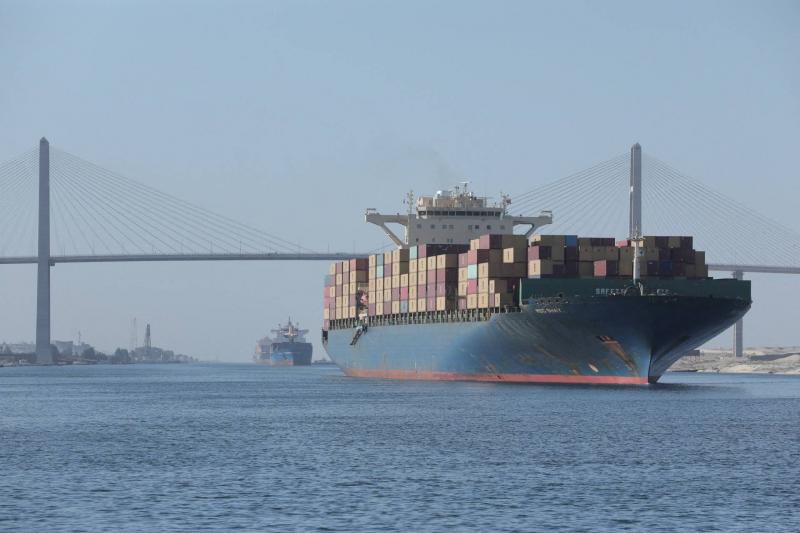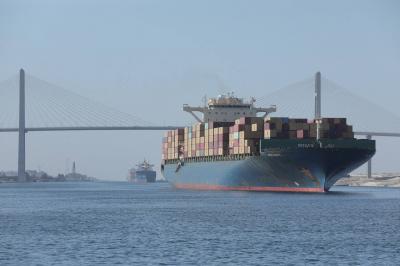To avoid traversing the Red Sea, the supertanker Grand Bonanza embarked earlier this month on a journey lasting approximately 40 days, carrying 1.8 million barrels of Abu Dhabi crude for Total Energies from the UAE, navigating around Africa to reach France. This route will prolong the journey by at least two weeks compared to the usual path through the Suez Canal and will cost about 5.7 million dollars, an increase of around 80%, according to estimates from a shipping source and data from the London Stock Exchange and Kepler data analysis firm. The rental of the Grand Bonanza by the French oil giant highlights the impact of the Houthi attacks in Yemen on shipping activity in the Red Sea, leading to cost increases and global disruptions in oil trade. The recent missile attack on a fuel tanker chartered by Trafigura further underscored the existing risks.
Energy producers and traders are considering the high costs associated with longer voyages around the Cape of Good Hope and are turning to larger crude oil tankers to manage costs and risks, while buyers are demanding discounts to compensate for increased shipping premiums and war risk insurance costs. Shipping companies are altering their routes and refueling points and increasing sailing speeds, which consumes more fuel and raises emissions.
The cost of shipping oil has surged by 80% from the Middle East to Europe. Stefano Grasso, a portfolio manager at 8 Financial Edge in Singapore, stated, “Unless the disturbances in the Red Sea subside quickly, we will see a significant increase in the cost of crude oil delivery.” Traders mentioned that European refiners have been affected by the longer shipping times, which lead to higher costs for their crude supplies; however, their profit margins remain supported by reduced imports of competing products from the Middle East and India. They added that the extended journey times have reduced the number of available tankers, impacting shipments of naphtha from Europe to Asia and diesel from the East to Europe. Goldman Sachs analysts noted in a January 29 memo that “the recent uptick in clean shipping rates supports refined product prices in net importing regions, including diesel in Europe, naphtha and fuel oil in Asia, and gasoline in the United States.”
Mukesh Sahdev, head of oil trading at Rystad Energy consultancy, stated that U.S. refineries are benefiting as they can send fuel products to Europe to replace supplies from the Middle East, similar to how the U.S. replaced Russian gas supplies following Moscow's invasion of Ukraine. He noted, “The recent attacks in the Red Sea pose a threat to refined product imports in the EU and provide an opportunity for the U.S. refining system to fill the gap once more.”
Traders indicated that for European refiners purchasing Basrah oil from Iraq, elevated import costs weaken demand in the first quarter. The cost of chartering a Supramax vessel with a capacity of one million barrels to send Iraqi oil to Mediterranean refineries has risen by $2.50 to $3.50 per barrel, while insurance rates have nearly tripled to between 10 to 15 cents per barrel, according to a trader with a European refining company. Additionally, the volumes of Iraqi crude heading to Europe have also diminished because, in the current futures market, prices for near-term oil are higher than for later months, causing shipments to lose value during the additional twenty days spent at sea.
Conversely, sellers of Kazakh Caspian Blend crude to Asia are offering shipments via Very Large Crude Carriers (VLCCs) around Africa instead of smaller Supramax tankers to benefit from economies of scale, traders noted, although no deals have yet been finalized for shipments to be delivered in May. However, one of the challenges with these VLCCs, which can carry up to two million barrels, is that their size doesn't allow them to dock at the Russian port of Novorossiysk, where the Kazakh pipeline blend is exported, meaning shipments must be transferred from smaller tankers to VLCCs, resulting in additional costs. A participant in the Kazakh pipeline crude trade remarked, “I can see the market is clearly splitting between east and west. Basrah remains east, and the Caspian pipeline company remains west.”
Regarding transit in the Red Sea, a shipping source indicated that Total Energies temporarily chartered the very large crude carrier Amphion to load crude from Fujairah to the UK on February 6 and 7. The agreement includes an option to route via the Cape of Good Hope at approximately $6.4 million, or via the Suez Canal at about $3.7 million. Total Energies declined to comment.
The Asian market is currently receiving fewer vessels. Last week, shipping prices for long-range vessels capable of carrying 670,000 barrels of diesel from South Korea to the UK jumped by at least 30% to over $6 million, according to data from Simpson Spence and Young Tankers. This, in turn, raised prices for smaller, mid-range tankers by 20%, which navigate routes across Asia. Serena Huang, an analyst at Fortexa oil analytics, stated, “We are seeing at least 70 tankers diverting to the Cape of Good Hope since the U.S.-led strikes began on January 12,” adding that more are expected to divert as tensions escalate between the Houthis and U.S.-led forces.
Traders noted that rising shipping and insurance costs simultaneously restrict shipments of diesel and aviation fuel from Asia and the Middle East to Europe. Kepler data indicated that shipments of diesel from India to Europe declined by approximately 80% in January. They further stated that a 50% rise in shipping costs is likely to reduce opportunities for European refiners to export naphtha to Asia. Additionally, the recent attacks by Ukraine on Russian refineries and a major fuel station have increased disruption in global trade, with intentions to cut exports from there. Traders mentioned that this has pushed more buyers to seek Middle Eastern supplies for Asia, leading to a 60% increase in shipping rates for long-range vessels that can transport 650,000 barrels of naphtha, now ranging from $5 million to $6 million.




